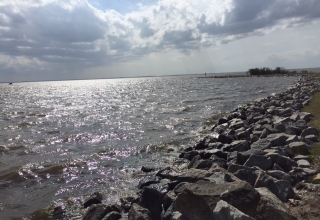
No matter how obscure the cause of any such problem may seem to be at first, a comparison of the current problem situation with the same situation at an earlier point in time when the problem did not exist or was not as serious should provide evidence that will lead to the solution of the problem. Something has to happen to change one situation into another. This stance is particularly important in a polarized situation—such as exists in the mid-21st Century. We tend to believe that “it” has always been messed up and refuse to examine a time when things were “better.” Misinformation abounds regarding the ”bad old days” that still exist in the “bad new days.” Under these circumstances, the causal/resource analysis tool we are describing in this section of the essay are of particular value.
Change over time becomes a critical point of analysis. This change becomes the clue that leads to the solution of most machine-related problems. This same strategy can be applied to some “people problems.” If there has been a deterioration in performance over time, a comparison of the current situation with an earlier situation will produce evidence of the cause of the problem in much the same way as a machine problem (although often with less certainty). Don’t give up on people or problems. They might be more elusive but are still amenable to causal/resource analysis.
In some cases, the problem has always existed. The bad old times might be a reality. Even in these cases, an immense amount of information can be acquired by comparing that situation to a different situation in which the problem either does not exist or does not exist to as serious a degree. If, for instance, the affirmative action program in your organization not only does not seem to be working but also has never worked, you can learn a great deal about the causes of that problem by comparing your program with a more successful program in a similar organization. The causes of the problem are almost certain to lie in these differences. The processes involved in the now-widely used tool called Benchmarking can be quite helpful in this regard—especially if engaged in an appreciative manner (Bergquist, 2003).
An emphasis on differences, however, will only help to isolate the cause of a problem; it will not isolate the means for solving that problem. Unfortunately, the similarities between a problem situation and a more desirable situation are often overlooked in a rush to solve the problem. Suppose, for instance, that your planning for the introduction of a new product does not seem to be going as well as usual. If you examine the similarities between the current problem situation and a more desirable one, it may become clear that the things that have not changed (your experience, for example, or your planning model) can be relied on as resources to help you work through the current difficult situation. You can turn to problem solving with a clearer understanding of your strengths.
The following sequence of steps suggests how one might conduct a causal/resource analysis.
STEP 1: IDENTIFY AND ANALYZE A COMPARATIVE SITUATION
To begin the process of identifying causes and resources, identify or create a situation with which the current situation C8.fl; be compared. Three possible types of comparative situations are possible; they are as follows, listed in order of desirability from most to least desirable:
I. Type A: the situation as it currently exists compared with the same situation at some earlier point in time when the problem did not exist or was not as serious;
2. Type B: the situation as it currently exists compared with a similar situation in which the problem does not exist. or exists but is not as serious; and
3. Type C: the situation as it currently exists compared with the target.















